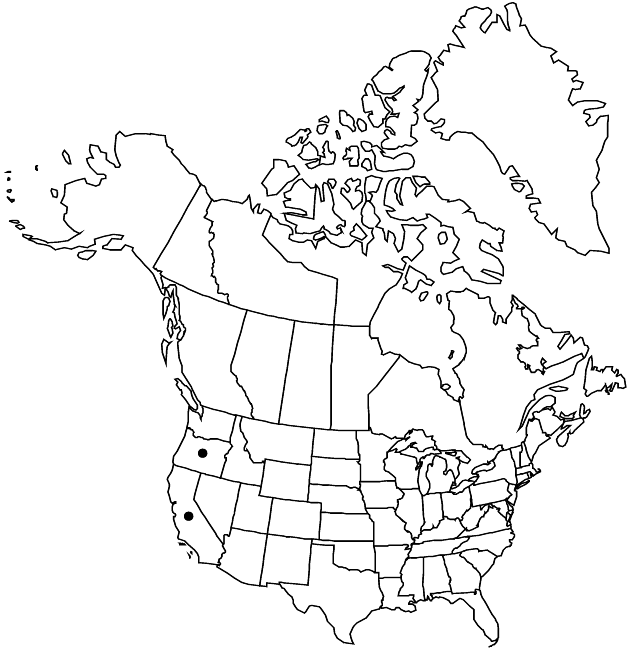Plants 40–70 cm. Stems usually glabrous, rarely tomentulose. Leaves: basal blades oblanceolate to elliptic, 100–250 × 12–25 mm, not thin or succulent, margins entire to denticulate, faces glabrous. Heads in racemiform arrays. Involucres hemispheric, 10–15 × 12–18 mm. Phyllaries: bases pale, green-tipped, margins hyaline, sometimes ciliate, apices erect, faces glabrous. Cypsela faces densely sericeous.
Phenology: Flowering Jun–Oct.
Habitat: Coastal valleys and marshes, neutral or saline soils
Elevation: 0–300 m
Discussion
Variety racemosa is recognized by its robust habit, large heads, racemiform arrays, and occurrence in non-alkaline soils.
Selected References
None.
Lower Taxa
None.
No values specified."[" is not declared as a valid unit of measurement for this property."[" is not declared as a valid unit of measurement for this property.
... more about "Pyrrocoma racemosa var. racemosa"
introrse +
connate +
green +
distinct +
herbaceous +
erect +
acute;obtuse;acute +
scarious +
green +
distinct +
hirsute +
papillate +
racemiform +
continuous +
1-nerved +
succulent +
petiolate +
curved +
attenuate +
3mm;30mm +
lanceolate;oblanceolate;elliptic +
reduced +
ribbed +
stigmatic +
brownish +
persistent +
15;60 +
unequal +
absent +
lanceolate +
reduced +
sessile +
yellow +
absent +
10-12-nerved +
sericeous +
dimorphic +
2.5mm;5.5mm +
staminate +
straight +
glabrous +
distinct +
proximal +
1;5 +
bisexual +
dispersed +
singly +
indeterminate +
3;15 +
surrounding +
hemispheric +
alternate +
erect +
deltate +
spinulose-serrate +
hyaline +
2-carpellate +
inferior +
attached +
anatropous +
tawny +
persistent +
tough +
thick +
absent +
connate +
1-nerved +
persistent +
distinct +
herbaceous +
falling +
proximal +
unequal +
equal +
Fl. N. Amer. +
1842 +
pistillate +
absent +
fertile +
epaleate +
pitted +
convex +
fibrous +
exalbuminous +
modifed +
4;5 +
Endemic +
alternate +
simple +
triangular +
2-branched +
glabrous +
Pyrrocoma racemosa var. racemosa +
Pyrrocoma racemosa +
variety +
tubular-funnelform +
equaling +
sessile +
perennial +
